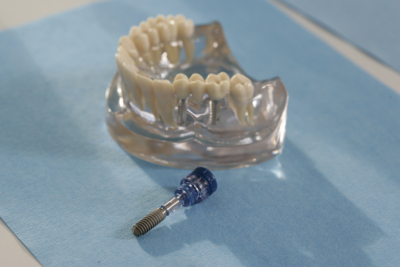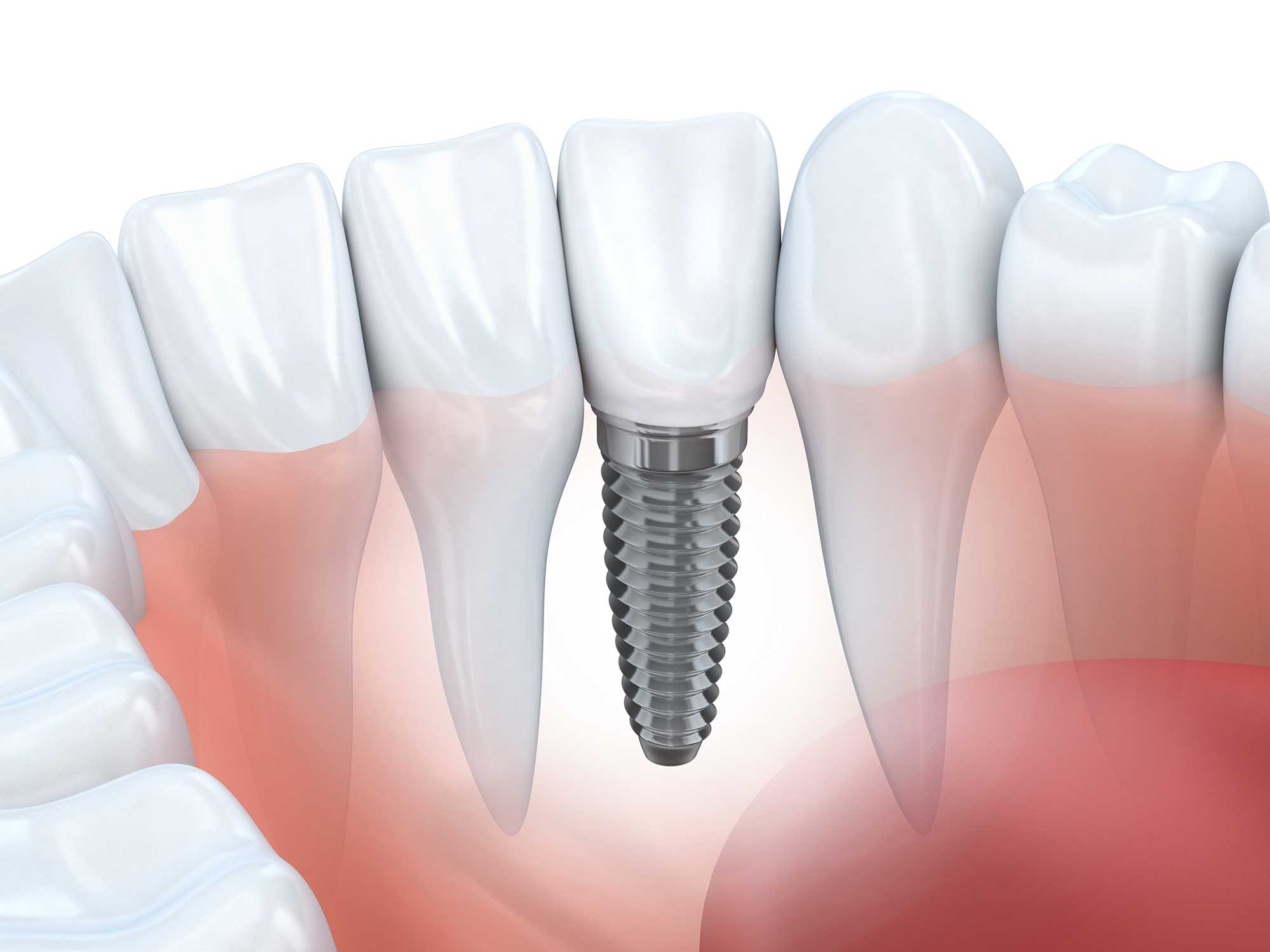
Implants can help preserve your oral health.
There are situations where nothing can beat an implant-supported solution for instance when a single tooth has had to be extracted or has been lost. In this case, the lost tooth is replaced 1 : 1 no neighbouring teeth need to be included to facilitate a small bridge solution.
Missing teeth at the end of the dental arch
Implants are also the best solution if the last teeth (the ones farthest back) in the dental arch are missing, so that there is no tooth available to support the far end of a bridge. If no implant is placed to help support the bridge, the free-floating end of the bridge (cantilevered pontics) will rock when exposed to the chewing forces. Over time, the overload on the existing supporting tissues will result in wear and tear on the jawbone joint, called temporomandibular joint.
What types of problems require extensive preparation if implants are to be used?
Complete tooth loss is usually a function of the patients age. It will often be accompanied by a loss of available bone substance, which may be insufficient to support implants, so that the treatment time is considerably lengthened.
A safe foundation is a must for any implant. If no safe foundation is available, an implant cannot be inserted, or else the bone has to be built up first. There are several different ways of doing this, depending on what makes sense and what is feasible in each individual case and for each individual patient.
Sometimes
it is possible to remove a piece of the patients own bone at a
suitable location and to transplant it to where more jawbone substance
is needed. This type of bone, the patients own bone, will fuse with the
existing jawbone to form a stable structure over time.
Alternatively,
it is possible to use so-called bone replacement material, which
triggers a biological process that will also finally result in creating
more and more stable bone substance. In the upper jaw, an additional
layer of bone can be created by lifting the sinus floor above the
implant site and then lining it with bone (replacement) material.
Every dental implant needs a minimum bone depth for support.





